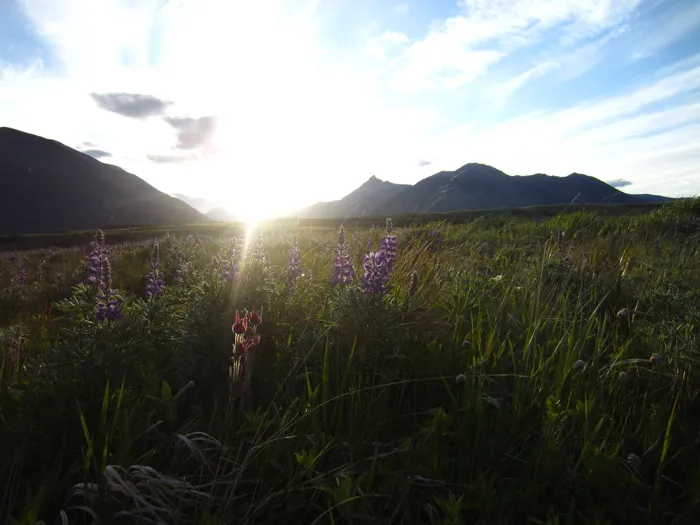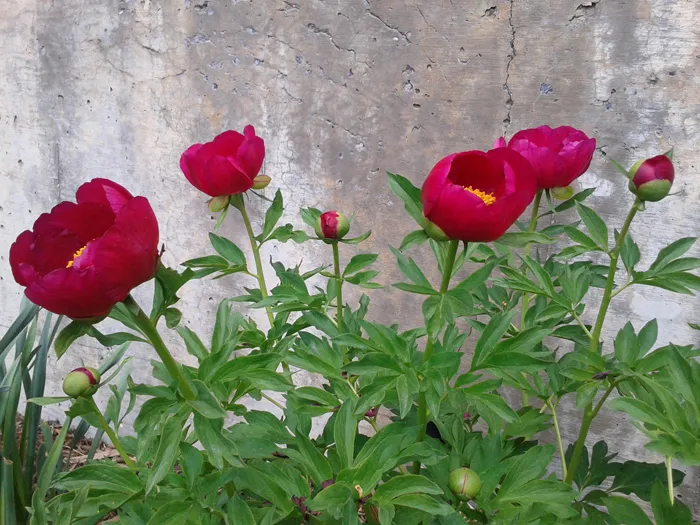1
Before you begin
If you picked up this book, it means you’ve got a vision that your garden can be something more than a collection of plants. I’m going to teach you about colour and focal points and texture and good things like that, but first we have to be realistic about where we live. Chances are good that this isn’t the first time you’ve looked at a book on garden design. Maybe you’ve even gone home, tried some things out, and made a genuine effort to come up with something beautiful. We’ve all felt the ocean of disappointment after doing everything correctly but finding a reality that differs greatly from the vision. Lots of people give up after that and don’t try again.
Well, if you tried to design something grand and you failed, it probably wasn’t your fault. You probably very innocently picked up a book from a well-known writer, quite likely featuring a picture of him or her smiling in an immaculate garden on the back cover, took it home and did what they told you, and things went completely sideways. That smiling (smug, even) writer was probably somewhere in Vancouver or Toronto or England.
In these sorts of places, gardeners have no idea what wind or hail or cold actually is. They have no idea what a hot, dry wind can do in summer or what a chinook wind can do in January. They don’t have to deal with heavy, clay soil and a growing season where you can easily have just eighty frost-free days—and that’s if you’re lucky. Then there’s pests and diseases and garden centres selling you things that were never intended for your climate and saying, “You’ll do fine!” Frankly, it’s amazing that anyone here even bothers gardening at all.
Garden design is like most things in life—anyone with an interest and willingness to commit can learn and become good at it. You don’t have to go to school and get a horticulture degree to create a fabulous garden. It is comparable to you being able to change the oil in your car without having to go to school and become a mechanic.
I can teach you enough in this book that you should be able to go forth and boldly create something beautiful, which the world desperately needs, and you should be able to do it in our prairie climate. This last part is absolutely critical; if you design a beautiful garden for a Vancouver climate and you live in Regina, you are going to have problems. I’d like for you to avoid problems.
So to you, dear homeowner and potential garden designer, I advise this. Plants are expensive; don’t throw perfectly good money away. Choose your plants wisely—the right plant in the right place is going to stay healthy with very little work, whereas you’ll constantly be providing life support to a poor choice. Research and educate yourself. Don’t think short term; don’t put a shrub or a perennial in if you won’t be there to look after it. Don’t put something in that will be a problem for the person who inherits the yard after you. Be inspired. Take some risks. Have fun! Together, we will walk through the considerations you need to make when designing your own beautiful garden and then I’ll point you in the right direction for choosing the best plants for our harsh prairie climate.
Passion in gardening
This is a book about design, and to design well, you need to be inspired. What is more inspiring than your own garden? Gardens are spiritual places, and they should be treated as such—a garden is sacred. The basis of any good garden design is a love of plants. If I went to art school, I could learn to paint. I could learn all the great masters through time, learn to recognize their work, and learn all the techniques I need to paint a picture. Yet if I never learn to love art, if I never learn to be passionate about the creative process and the act of putting a painting together, my work will never be as good as someone who has a fire in the belly and paints because he or she must!
To garden like a master, to make art with plants, requires passion.
If you are looking for an “easy fix,” a magic wand, a beautiful garden with absolutely minimal effort, you will lose. A half-hearted attempt will yield (at best) half-hearted results. But gardening requires not so much discipline as it requires devotion. There is a vast difference between the two. Be passionate about your garden! Passion draws people—both other gardeners and non-gardeners alike. When you have a deep love for something, it is like a beacon and it draws people.
I love gardening and plants with all my heart and soul and it shows. When I write, when I speak at a gardening conference, when I help someone create a garden, one of the comments I often hear is that I’m “so into this,” and “so passionate about it.” This is true, and like any artist, you must be passionate about gardening to excel at it. A garden that is the recipient of passionate love will always be a great garden.
I’d like to say you get out of it what you put into it, but that isn’t exactly true. My garden has rewarded me ten times over for every bit of effort I put in. Those rewards are because I have devoted myself to my garden. I get on my hands and knees and pull weeds. I don’t fart around with landscape fabric or other such nonsense, nor do I want some sort of spray to do my work for me—they typically cause more problems than they solve anyhow. I work for my garden. I have cried over it, languished over it, celebrated it, exalted it, and done everything in my power to help it succeed.
Every garden I have ever visited that was rich and vibrant and full of life has been birthed by a person who saw a plot of earth and dreamed about the potential it held, and then acted on that potential.
I’ve never been to a magnificent garden where the gardener did not know the names of the plants or did not know the stories those plants told.
Deliberate gardening
A beautiful garden requires deliberate choices, not a haphazard circumstance. Adding every interesting plant you see in the greenhouse will not improve your design. It will be your task as a gardener to make decisions that are true to your vision and to keep things under control.
A garden also requires care. It needs someone to pull the weeds and do the watering and keep more vigorous competitors under control.
The trick in gardening, especially with a perennial border, is to gently guide your plants into a state where they appear natural and not needing guiding. This is not one sided, either, because the plants are bound to teach you lessons and things will not always go as you planned. Plants do unexpected and surprising things sometimes, and this can be wonderful. You will also acquire plants with no inkling as to where they came from. A saskatoon berry came up in the garden next to the mugho pine; I didn’t plant it there but likely one of the birds did. My mother has a golden elder in a nice location beside the deck; that was also a surprise that showed up as an unplanned seedling. Sometimes this is serendipity; sometimes it is not. Don’t feel obligated to keep every plant that wanders in. It’s perfectly acceptable, and often necessary, to evict plants that aren’t working with what you envision your garden to become. But how do you develop this vision? First you need to find your direction.
Finding your inspiration
Many of us, when faced with the daunting task of creating a garden, aren’t sure what we want to accomplish. There are so many possibilities that it can be overwhelming and a bit frightening. Where do I turn for inspiration? Usually I go to the mountains. I am close enough to the Rockies that it’s not hard for me to get away and get on a slope somewhere and look at what’s going on botanically and pull inspiration from that.
We all have our places we can go—the beautiful forests of northern Canada, our many provincial and national parks, and sometimes as close as just down the street. All of us have a favourite garden or yard that we like to drive by or a favourite public garden that we like to visit. We also have gardeners who inspire us and draw us into this fascinating world of foliage and flowers. Maybe you have a parent or grandparent who loves gardening, or perhaps a much-loved aunt or even a neighbour.
You can also draw inspiration from history and from the library. I have been inspired by many of the great British gardeners and plant hunters down through the ages by reading what they had to say and looking at the situations they were faced with and how they planted accordingly. Gertrude Jekyl had been dead for many years by the time I arrived on this planet, but the books she wrote and the gardens she created are largely still here, leaving me to gather up her wisdom and benefit from it. There are certainly others as well.
Christopher Lloyd (the great British gardener—not the American actor from the Back to the Future movies)...



